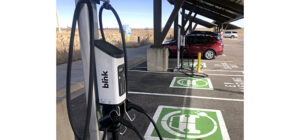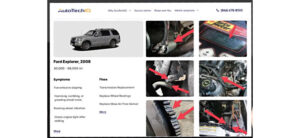The annual survey showed again a high interest in advanced driving features — here are the top nine highlights from the findings
New York—S&P Global Mobility surveyed 8,000 consumers across eight countries in 2024, shedding light on the evolving landscape of consumer expectations and behaviors in the era of autonomous driving. The survey highlights the growing interest and reliance on ADAS features among consumers.
Here are the top nine highlights from the findings:
- ADAS Popularity: The survey revealed that more than half of the global respondents have some degree of familiarity with ADAS features. The features people are most familiar with are park assist, collision warning, and lane assistance. It can be concluded that respondents are most familiar with low-level autonomy driving features, and this can be explained because most automakers already offer them as standard on their top trims and optional on their lower trims.
- ADAS Desirability: The annual survey showed again a high interest in advanced driving features. For the fourth year in a row, blind spot detection was a consistent favorite among consumers, while driver facial monitoring remained the least desirable feature. This might be attributed to privacy concerns.
- Desirability vs. Cost: S&P Global Mobility found that the features users are most familiar with are the ones they are least willing to pay extra for. This could be the result of current high market penetration; consumers may think that these safety features are more basic and should be built into the base price of the vehicle. The exception to this trend is night vision as it is highly desired and worth paying extra for. Other features reveal a gap between desirability and willingness to pay, underlining the complexity of consumer preferences.
- Regional Variations: Market dynamics differ across regions, with strong demand in mainland China and India but greater price sensitivity in Japan, emphasizing the need for tailored product offerings and pricing strategies.
- Bundle Preference: Consumers prefer bundled packages of ADAS features for comprehensive safety solutions, presenting both opportunities and challenges for automakers in pricing and packaging.
- Trust in Autonomous Driving: Despite growing interest, consumer trust in autonomous driving remains a barrier, with a paradoxical willingness to pay extra for full autonomy despite it being the least desired feature. Consumers are becoming increasingly open to conditional autonomy with a greater opportunity to emphasize efficiency in operation as a key use case. As the level of driver-vehicle interaction continues to decrease, consumer skepticism and discomfort is bound to rise. Consumer perception and trust in these technologies will likely take more time to grow and seems to remain with established brands associated with quality and reliability. Respondents overall trusted German premium automakers the most when it comes to the ability to develop safe and effective self-driving vehicles.
- Influencers of Trust: Safety ratings and certifications are key influences of consumer trust and most global respondents would even be willing to pay extra for vehicles with higher safety ratings. This emphasizes the importance of safety in driving adoption, while privacy concerns regarding driver monitoring persist.
- Communication and Transparency: Building consumer confidence through transparent communication, rigorous testing, and regulatory compliance is essential for widespread acceptance of autonomous technologies.
- Closing the Gap: Bridging the divide between consumer expectations and market offerings requires addressing trust issues, regional variations, and effectively communicating the benefits of autonomous driving.










Comments are closed.